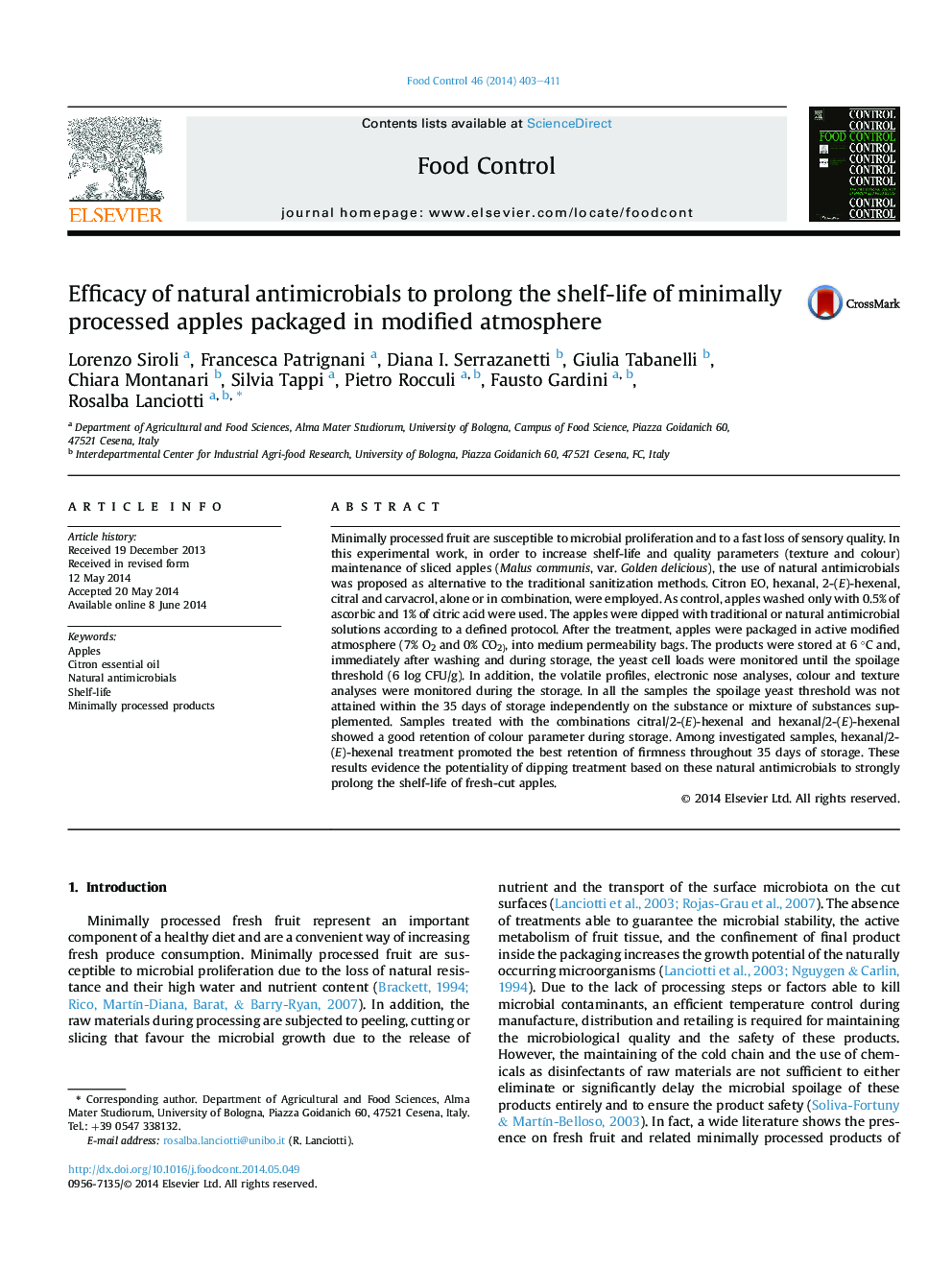| Article ID | Journal | Published Year | Pages | File Type |
|---|---|---|---|---|
| 6391257 | Food Control | 2014 | 9 Pages |
â¢Natural antimicrobials prolonged the shelf-life of minimally processed apples.â¢Apples treated with natural compounds had quality indexes better than controls.â¢This approach represents a useful tool to create minimally processed apple products.
Minimally processed fruit are susceptible to microbial proliferation and to a fast loss of sensory quality. In this experimental work, in order to increase shelf-life and quality parameters (texture and colour) maintenance of sliced apples (Malus communis, var. Golden delicious), the use of natural antimicrobials was proposed as alternative to the traditional sanitization methods. Citron EO, hexanal, 2-(E)-hexenal, citral and carvacrol, alone or in combination, were employed. As control, apples washed only with 0.5% of ascorbic and 1% of citric acid were used. The apples were dipped with traditional or natural antimicrobial solutions according to a defined protocol. After the treatment, apples were packaged in active modified atmosphere (7% O2 and 0% CO2), into medium permeability bags. The products were stored at 6 °C and, immediately after washing and during storage, the yeast cell loads were monitored until the spoilage threshold (6 log CFU/g). In addition, the volatile profiles, electronic nose analyses, colour and texture analyses were monitored during the storage. In all the samples the spoilage yeast threshold was not attained within the 35 days of storage independently on the substance or mixture of substances supplemented. Samples treated with the combinations citral/2-(E)-hexenal and hexanal/2-(E)-hexenal showed a good retention of colour parameter during storage. Among investigated samples, hexanal/2-(E)-hexenal treatment promoted the best retention of firmness throughout 35 days of storage. These results evidence the potentiality of dipping treatment based on these natural antimicrobials to strongly prolong the shelf-life of fresh-cut apples.
